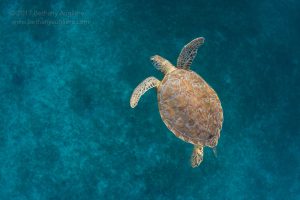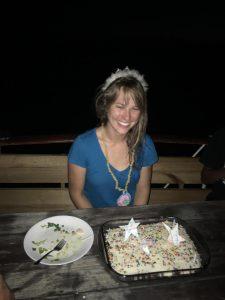Trip #2017-07 (August 1st – August 9th)
For the first part of Trip 7,we spent our time surveying off of Grand Bahama Island, searching for the elusive southern cluster. While we didn’t find them, we did come across a group of feeding bottlenose dolphins. Sommer Kuhn, a graduate student with the project and our resident bottlenose expert, took surface shots of the individuals. The group was a mix of females with calves and males. Then, we decided to slip in the water to observe them feeding. We watched the dolphins scan and dig in the sand, looking for fish, while also collecting video, acoustics, and photo-identification shots. We were able to get new sexes on a couple of the individuals.
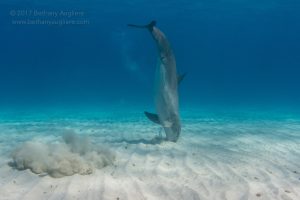
An adult Atlantic bottlenose dolphins, Barbles, digs in the sand. Denise coined this behavior “crater-feeding” because of the craters that dolphins leave behind on the sandy seafloor.
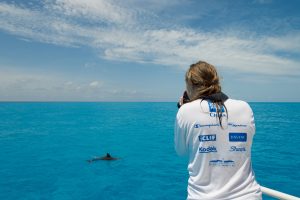
Sommer Kuhn, a graduate student with the Wild Dolphin Project, takes surface shots to identify bottlenose dolphins.
Both bottlenose dolphins and spotted dolphins feed on the shallow sandbank during the daytime. They eat slightly different critters, because bottlenose dig a bit deeper. However, the spotted dolphins go off into deep water at night to feed on flying fish and squid. Weather permitting, we sometimes follow the dolphins into deep water, drift, drop lights in the water, and watch as the dolphins zoom around hunting and echolocating. I was hoping we’d get to do a night drift on this trip, but weather didn’t cooperate.
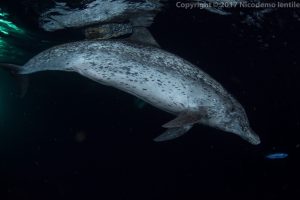
An Atlantic spotted dolphin, Zion, travels into deep water at night to feed on flying fish and squid.
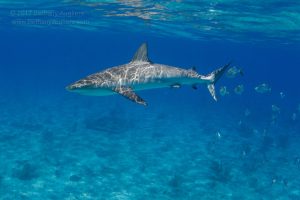
Before we traveled south to Bimini, we took a snorkel break on our favorite wreck, The Sugar Wreck, which is home to a couple small reef sharks.
After a couple days of searching, we traveled south to Bimini. There we ran into several groups of familiar animals, traveling and feeding. We saw a couple different male alliances, including Donkey and Kong, as well as a trio we’ve seen a several times this summer, Baelish, Pulsar and Toad. Male alliances are one of the strongest bonds in the dolphin community and they usually maintain them for life. They form these relationships to help them mate with females as well as fend off the larger bottlenose dolphins during aggressive interactions. Previous studies by the WDP have shown in takes about 6 spotted dolphins to fend off one bottlenose, so having friends helps.
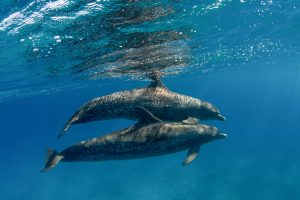
Two males, Donkey and Kong, swim together and maintain physical contact. Dolphins are social and tactile creatures, and often use touch to reinforce social bonds.
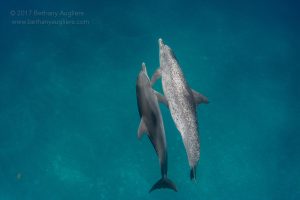
Zion swims along with her new calf, Zahara. Zahara will stay with her mother for about 3 years before she ventures off on her own.
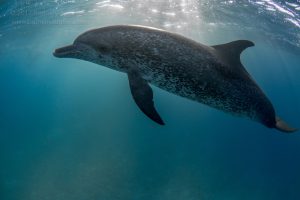
Baelish, a male dolphin, swims in shallow water at sunset before he and the group began to head West into deep water to feed.
Our new anchor spot in Bimini is a great place to snorkel in the evenings or mornings before we survey for dolphins. It has some big rocks full of fish and lobster, and seems to be home to a population of juvenile green sea turtles.
We also had to celebrate the graduation of Sommer Kuhn, who finished up her master’s work with Denise Herzing and the Wild Dolphin Project this summer. She studied the residency patterns of the bottlenose dolphins. Be on the lookout for her upcoming publication!
You can read more about social structure of these dolphins in our peer reviewed scientific journals and meet the dolphins.

